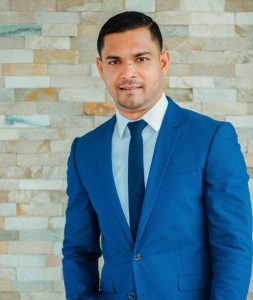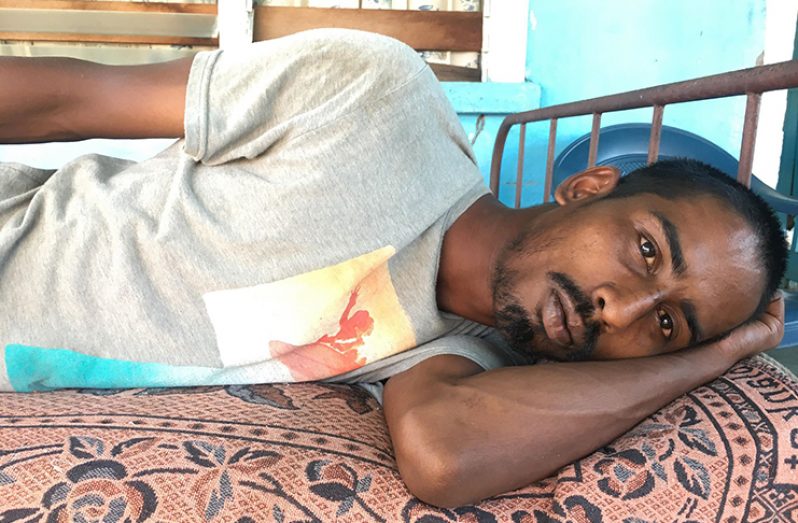TOO often we hear the phrase, “Nah worry with he/she…them mad, them a ketch fits”, as people with epilepsy are stigmatised even in this information age. More frightening is the fact that some are of the view that someone “do them” (referring to witchcraft) or is possessed which is why they are experiencing seizures.
Epilepsy commonly called ‘Fits’ in Guyana is a neurological disorder associated with abnormal electrical activity in the brain that usually results in seizures that may also be accompanied by loss of consciousness or convulsions.

According the World Health Organisation (WHO), Epilepsy is defined as having two or more unprovoked seizures which can vary from the briefest lapses of attention or muscle jerks to severe and prolonged convulsions. Seizures can also vary in frequency, from less than one per year to several per day.
The WHO said there are some 50 million people worldwide who are affected by the condition at a global average of 4-10 per 1000, however for middle and lower income countries such as Guyana that figure is 7-14 persons per 1000.
One would think that with so many people being affected, that there would be less stigma attached to what many consider as being among the top four most common Neurological disorder worldwide.
In Guyana names like “Fitsy”, “Fitsman” and “Mady” are the most common names used to describe people suffering from the condition, the first 2 refer to the physical symptoms while the latter refers to a mental disorder. This stigma has resulted in many people being discriminated against.
When this publication visited a known epileptic male in Bangladesh Port Mourant and asked for him by his legal name, no one knew who he was, but as soon as his condition was described everyone replied, “OH! You mean Fitsy.”
Ahmad Rahaman now in his early 20s has been experiencing seizures since he was seven years old, as a result he was taken out of school after being diagnosed with the condition.
“After the doctor tell abee he a get fits, we keep he home so we can keep an eye on he, cause we nah want he get fits and fall down and something happen to he”, his mother explained.
When quizzed on how she reacts whenever he experiences an episode, she replied “I use to throw water on he and push wan spoon in he mouth because them seh he can bite out he tongue and swallow it, he pocket always get spoon inside”. After years of taking care of her only son, and with the help from a sibling she was able to care for him and learn ways of comforting him during a seizure.
Rahaman, being uneducated, works as a labourer doing odd jobs around the community. He explained that he gets no more than $1000 per day because everyone knows of his condition and won’t employ him fulltime, as such he is forced to accept whatever he is given, so he has a little income to purchase medication. His father passed away when he was just an infant.
He has recently started taking medication and the frequency of his seizures has reduced from once or twice per week to whenever he does not have medication, but the stigma associated with his condition has done irreparable damage to his social life. He is the subject of public ridicule almost on a daily basis, bullying and being called all sorts of names.
There are many more families that are suffering like Ahmad, but are of the view that the condition is a curse and has no treatment or in some cases believe that the treatment does not work.
The good news however according to Neurosurgeon Dr. Amarnauth Dukhi is that studies have shown that about 80 per cent of epileptic patients can lead relatively normal lives with medication.
“The vast majority of people who have seizures which is a symptom of epilepsy, are more than capable of doing anything as a normal person but more times with certain restrictions. It has been proven that most persons respond to medical treatment, around 80 per cent and do very well as long as they follow their medical instructions, among other social conditions like no alcohol, controlled diet etc.”
The Achilles heel of the condition however has been the adherence to the treatment, according to Physician Dr. Walter Singh, who has seen numerous cases of epilepsy at his clinic located at Belvedere. He explained to this publication that standard treatment usually takes a minimum of two years and requires constant follow up, but often times people after receiving the first round of treatment leave and never return.
“You have a process where you place the patient on medication and monitor their condition. They still require treatment despite not suffering any seizure, most people take medication for a few weeks and then stop but if any seizure occurs during the period, the medication dosage has to be revised and start the two-year period again, then wean it down. But most people after not experiencing any seizures, don’t see the need to continue the medication after a few weeks or months and they discontinue and suffer an attack and have to start all over again, or most choose not to because they feel the medication is not working and accept the situation”.
He further lamented that the lack of, or the limited availability of the medication needed for the treatment has played a major role in those needing treatment not getting it.
However, Dr. Singh noted that in his experience he has found that awareness of the condition and what may trigger an episode can go a far way to avoid the attacks.
“I have found that in some cases the attacks are triggered by stress, certain types of scent, alcohol, flashing/bright lights, a congested environment, among others. These can trigger off a spontaneous de-polarisation and cause a seizure, however there are cases with no explanation as to why it occurs”.
He further explained that many times the person is aware that they are about to experience an attack but usually does not recall what happens during the period it occurs. The process is usually described as an aura.
One such person is Mark (not real name) a policeman who has been leading a relatively normal life despite having the condition for over five years.
Mark explained that as recent as Sunday morning he suffered an episode which he knew was coming as his are usually triggered by stress, fortunately he has learnt how to manage in those situations even when he is alone.

“I had to learn how to take control so when I get this frightening feeling in my body I know what is coming so I would lay down let it pass. The feeling is awful afterwards, sometimes I feel weak, sleepy, nauseous, drowsy and can’t even walk,” explained Mark.
He is presently using medication that has helped him to cope but it was not smooth sailing for him, as he too has been victimised by his colleagues and even relatives, that make it worse for him as that usually stresses him out more and he gets an attack.
“Many times persons torment me, especially at work everybody know me as “Seizy” or “Fitsy”, even families call me names, sometime I feel like quitting, I feel ashamed of myself, I would do anything to get it to stop, it’s not something nice but when all is said and done I still have to earn, and I always wanted to be a police to protect and serve and that is what keeps me going. I keep praying to God that I don’t have it again, I hope one day God can bring healing to Guyana”, he said amidst tears.
Mark may be among the 20 per cent of patients who do not respond positively to the treatment, however there is hope for him as there is the option of surgery, according to Dr. Dukhi. The procedure, he explained, is called Resective Surgery and involves removal of tissues from brain, usually from the temporal lobe of the brain as along as it is non-eloquent and won’t alter any other functions of that person.
Even though Dr. Dukhi is capable of performing the surgery, it is not available in Guyana. The neurosurgeon explained before attempting such a surgery a lot of studies have to be done in order to identify the exact area that causes the seizure.
“Some of the studies are not readily available currently in Guyana but hopefully in the future we can have brain mapping and intraoperative monitoring done”.
The future for such surgeries in Guyana may be a lot sooner than later as the Epilepsy Foundation of Guyana recently acquired a electroencephalogram (EEG) machine that can monitor the electrical activities of the brain and readings are sent to a neurologist in the UK for diagnosis and based on the results surgery or treatment can be recommended, this is according to Dr. Thomas Singh the President of the Epilepsy Foundation of Guyana.
The foundation which has been among the leaders in the fight of epilepsy in Guyana has support groups where members share from their personal stories in a bid to help empower others. They have been going into schools, workplaces etc to raise awareness and host workshops with medical practitioners as well as helping to source medication for patients.
One of the medications that has a lot potential that was recently sourced is Keppra (levetiracetam) which is an anti-epileptic medication that they provide to patients.
Dr. Singh who also suffered from Epilepsy for a number of years underscored the importance of following the full course of medication and called for more awareness of the medical condition so that it can help dispel some of the myths and misconceptions surrounding Epilepsy. He is living proof that with adherence to medication epileptics can lead a normal life. He has been seizure free for over 25 years since he started medication.
Among the many misconception, according to Dr. Dukhi is that epilepsy is contagious and is usually associated with poor mental health, as well as violent behaviour all of which are untrue and feels the only way to truly make an impact is to increase awareness so that people recognise first, it’s a medical condition and that treatment is available to lead normal lives. The idea of placing a spoon in a patient mouth was also debunked as a myth, instead turn the person to the side and keep their airway clear. He urged caregivers to simply monitor and prevent the patient getting physically hurt in the process.
“Awareness is very important and is done by education, medical education and educating the population such as definition, causes, symptoms, how can it be controlled. You have to take it upon yourself as health care workers and others to increase awareness on the condition and debunk all stereotypes and stigma through education and awareness we can help to clear up misconceptions.”
Epilepsy has been around from around 4000 BC and has always been the subject of stigma, discrimination, misunderstanding and even fear. There have been several campaigns to raise awareness including the WHO ‘Out of the Shadows’ launched in 1997. In Guyana despite awareness campaigns the stigma and discrimination is still very prevalent especially in the rural areas.
Anyone who has experienced more than one seizure is asked to contact the nearest medical institution or the Epilepsy Foundation of Guyana through their Facebook page to get help.




.png)









